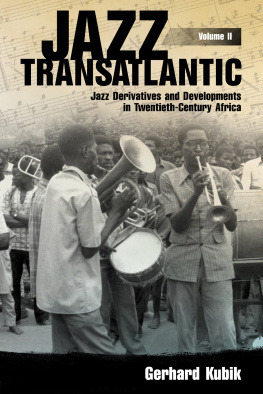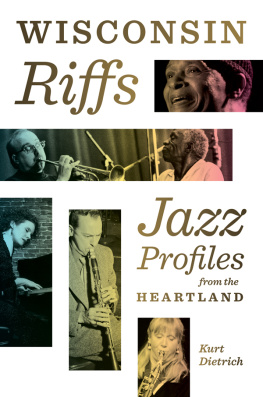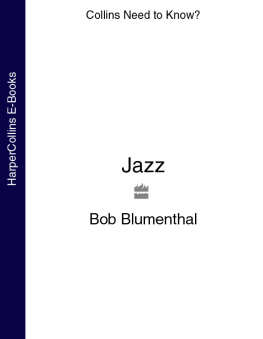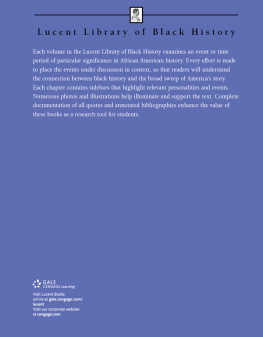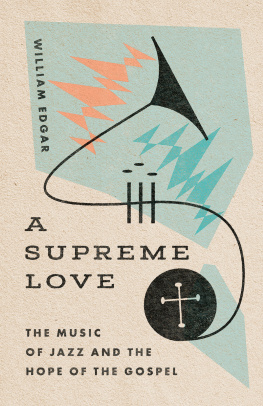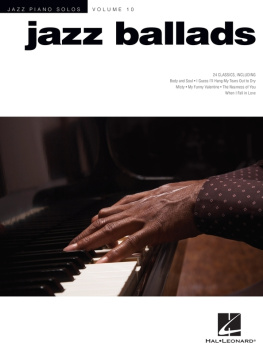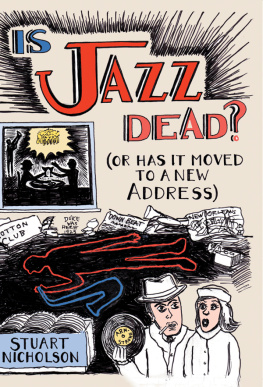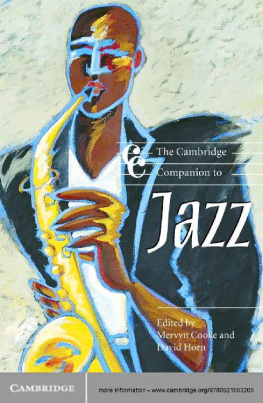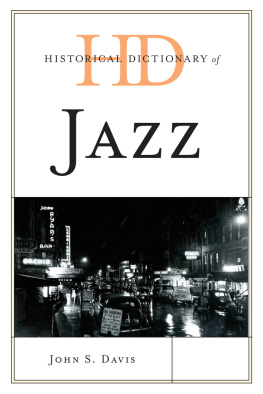
JAZZ Volume II
TRANSATLANTIC

American Made
Music Series
Advisory Board

David Evans, General Editor
Barry Jean Ancelet
Edward A. Berlin
Joyce J. Bolden
Rob Bowman
Susan C. Cook
Curtis Ellison
William Ferris
John Edward Hasse
Kip Lornell
Bill Malone
Eddie S. Meadows
Manuel H. Pea
Wayne D. Shirley
Robert Walser
JAZZ Volume II
TRANSATLANTIC
Jazz Derivatives and Developments in Twentieth-Century Africa
GERHARD KUBIK
University Press of Mississippi / Jackson
Publication of this volume was made possible in part by a generous donation from the Manfred Bukofzer Endowment of the American Musicological Society, funded in part by the National Endowment for the Humanities and the Andrew W. Mellon Foundation.
www.upress.state.ms.us
The University Press of Mississippi is a member of the Association of American University Presses.
Copyright 2017 by Gerhard Kubik
All rights reserved
Manufactured in the United States of America
First printing 2017
Library of Congress Cataloging-in-Publication Data
Names: Kubik, Gerhard, 1934 author.
Title: Jazz transatlantic, Volume II : Jazz derivatives and developments in twentieth-century Africa / Gerhard Kubik.
Other titles: Jazz derivatives and developments in twentieth-century Africa
Description: Jackson : University Press of Mississippi, 2017. | Series: American made music series | Includes bibliographical references and index. | Identifiers: LCCN 2017034031 (print) | LCCN 2017037262 (ebook) | ISBN 9781496806093 (epub single) | ISBN 9781496806109 (epub institutional) | ISBN 9781496806123 (pdf single) | ISBN 9781496806130 (pdf institutional) | ISBN 9781496806086 (hardcover : alk. paper)
Subjects: LCSH: JazzAfricaHistory and criticism.
Classification: LCC ML3509.A35 (ebook) | LCC ML3509.A35 K83 2017 (print) | DDC 781.65096dc23
LC record available at https://lccn.loc.gov/2017034031
British Library Cataloging-in-Publication Data available
CONTENTS
JAZZ Volume II
TRANSATLANTIC
Introduction
When I first saw Clint Eastwoods film Bird about the life of jazz icon Charlie Bird Parker, beautifully acted out by Forest Whitaker, I was in Harare, Zimbabwe. On a cold July 1989 evening, I was taken to a large cinema hall in town by my good friend Mitchel Strumpf, then in charge of the Ethnomusicology Programme at the Zimbabwe College of Music, where he had invited me to give a series of lectures.
The hall was about half full. People represented a broad section of the Harare public; there were many working-class regular cinemagoers, many youngsters, some university students, and some elderly, retired couples. In a place like that, with a modest entry fee to be paid, the most recent American films used to be screened, and this one had only been released a few months ago. The moviegoing local population in Harare, as in other cities of southern Africa, made such imports of English-language, mostly American movies profitable, from James Bond to Westerns, etc.
Bird was one of the rare, full-length jazz films to be seen, but one that stirred intensive interest because of its subject, and the excellent performance by Whitaker as Parker, Diane Venora as Chan, Parkers wife, Samuel E. Wright as Dizzy Gillespie, and others, with Parkers original performances isolated electronically from Chan Parkers private collection of recordings, and new backing musicians added. Whitaker earned the Best Actor award at the 1988 Film Festival in Cannes, and the film also won several other awards.
What can be concluded from this brief glance at jazz awareness in Zimbabwe? Most certainly, there was interest and knowledge of some aspects of jazz history in a broad cross-section of the Harare public. But does it certify the existence of a jazz scene in a place like that or elsewhere in the region?
Much, of course, remains unreported. In 1976 Caesar Fratantoni, a dentist and clarinetist from Argentina, founded with his Zimbabwean family members a traditional New Orleans jazz band, the Neptune Band of Zimbabwe. Sabina Violett Siankope played banjo and sang; Trijwell J. Siankope, cornet; Daniel, trombone; Junio, bass; and Japhet Louis was on drums. The group had international success. In 1981 they played in the Preservation Hall in New Orleans during the Jazz & Heritage Festival. In the same year they obtained a prize at the Breda Festival in the Netherlands; in 1984 they toured Germany and were recorded in jazz club Hannover on November 2. A German LP was released by Jazz Initiative Celle e.V.
There was a continuing jazz scene in Harare at least into the 1990s, when American jazz musician Linda F. Williams (2005) undertook her fieldwork. As a female saxophonist she contributed greatly to dismantling gender stereotypes. She was quickly integrated into the community of Harare jazz musicians playing in bop and post-bop idioms (e.g., Round Midnight, John Coltranes Mr. P.C., etc.).
Questions about the extent to which jazz was popular in Africa during the years when it proliferated internationally, from the 1940s to the 1970s, have been vexing researchers. With reference to Ethiopia, for example, one could say that Mulatu Astatke of Addis Ababa, founder of Ethio-jazz, was indeed playing jazz. But whether his jazz was popular in his home country and whether it was ever part of any scene is uncertain. In 2014, according to visitors, it did not appear that there was much left of a jazz scene in Addis Ababa, except at a few nostalgic tourist spots. On the other hand, Mulatus name has so much charisma these days that he can easily assemble a jazz group for an overseas tour.
The issue behind these observations touches on a larger problem: to what extent jazz musicians in Africa were sustained by local audiences, and whether scenes of like-minded musicians and fans had formed as, for example, at Mintons Playhouse in New York in the 1940s. These questions can only be addressed case by case, and within certain time periods. The answers may seem to be negative for Addis Ababa in 2014, regarding Mulatus Ethio-jazz, but affirmative for the same place in the 1960s with regard to the Imperial Bodyguard Band of Emperor Haile Selassie, a band that played remarkable big band swing. In Dakar and St. Louis, Senegal, there was definitely a jazz scene from the 1940s to the 1960s, and in a sense it has continued, though with modified musical contents. And in a variety of African places there are institutions of music education incorporating jazz classesthe Conservatoire in Dakar, and Johnny Mekoas Gauteng Jazz Academy in South Africa, to mention only two such institutions.
No doubt, the most intensive presence of jazz has been in South Africa, particularly from the 1960s to the 1990s, with festivals, clubs, and organizations like the Jazz Appreciation Society in Johannesburg. Even there one would not claim that jazz was part of a popular, mass-dominated musical culture, though on some occasions a stadium in Johannesburg was easily filled. Jazz has always been a bit esoteric, in content and accessibility. In South Africa the popular music of the time was jive, patha-patha, kwela, smanje-manje, mbaqanga
Next page
